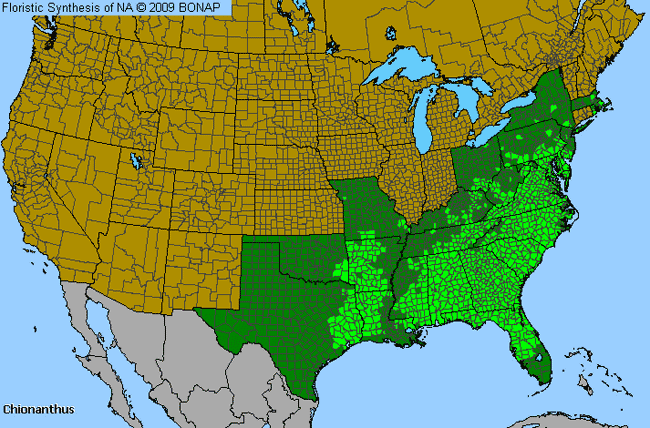Fringetree (Chionanthus)

Fringetree Genus Details

Fringetrees are native to the southeastern U.S. They can grow to 30 feet tall. The leaves are opposite, 4-8 inches long and 1-3 inches wide. They are narrowly elliptical, shiny dark green above and pale green below. Their fall color is yellow. Fringetree bark is brown with reddish-tinged scales. Flowers are 1 inch long and have 4 narrow white lobes with purple dots inside. The flowers are very fragrant. Fruit is 3/4 inch long, elliptical and dark blue. Birds use these berries as a food source. Fringetree is the last tree to bear new leaves in the spring. Herbalists use the leaves as a poultice for inflammations.
Fringetree Allergy Info

Fringetrees are considered allergenically insignificant, as they are low pollen producers.
Fringetree Pollen Description

Chionanthus grains resemble grains of Fraxinus (ash). The grains are suboblate to spheroidal; the amb triangular, circular, or quadrangular and 3-4-(6) colpate. The colpi are long and narro. The sexine is typically reticulate. However, the grains are smaller than Fraxinus grains.
Chionanthus grains measure 19 x 13 micrometers.
Species in This Genus

Allergenicity Legend:
 Mild Allergen |
Mild Allergen |
 Moderate Allergen |
Moderate Allergen |
 Severe Allergen |
Severe Allergen |
 Allergy Test Available
Allergy Test Available
Fringetree (Chionanthus) is a genus of the OLEACEAE family.
This genus includes the following allergenic species:
This genus includes the following allergenic species:











